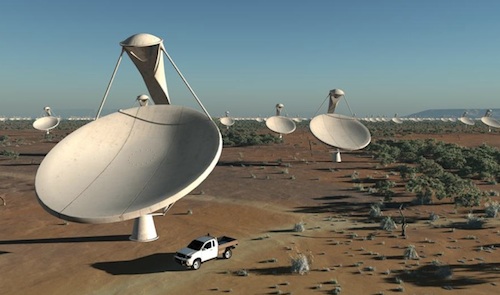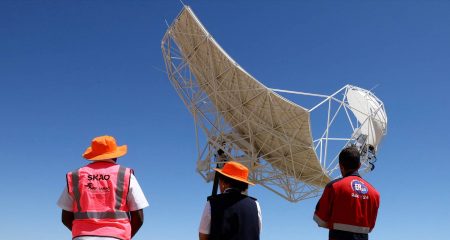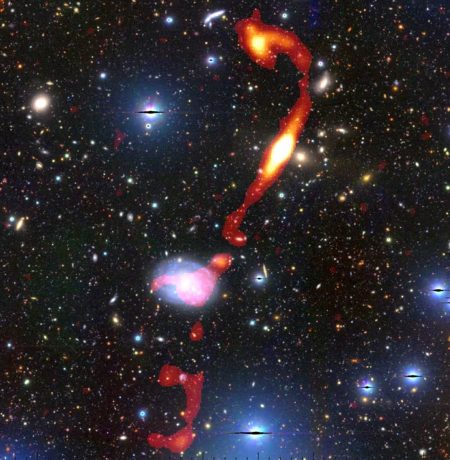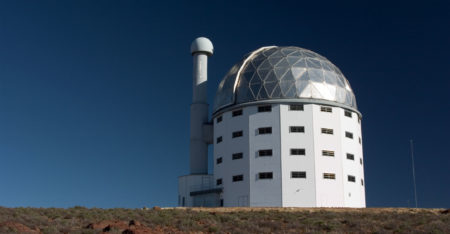
Africa, the birthplace of the human species, has long been a magnet for archaeologists. Now SA wants to draw leading astrophysicists to the continent as well with the world’s most powerful radio telescope, the Square Kilometre Array (SKA), an instrument that would be able to look back to the infancy of the universe.
SA and Australia are the two finalists in the competition to host the project, which will eventually link thousands of radio dishes to make a massive antenna with a total surface area of one square kilometre (250 acres).
The telescope, the brainchild of an international consortium of scientists, will be 50 to 100 times more sensitive than today’s best radio telescopes and is projected to cost in the neighbourhood of $2bn.
Like an archaeologist digging into ever deeper layers of soil, the telescope will pick up radio waves from deeper in space than ever before, ones whose sources are billions of years old and may not even exist anymore. Scientists say that power will help them look back in time and see how the universe took shape after the big bang.
For African astronomers, next year will be decisive. Scientists will decide by early March whether the SA and Australian SKA site proposals pass muster. The consortium will then choose the winner, a decision the South Africans say will be political and economic as well as scientific.
SA also plans to start construction next year on a 64-antenna radio telescope called MeerKAT that would be one of the five most accurate in the world. Observation slots at the MeerKAT are already fully booked for its first five years.
A prototype, the KAT-7, is up and running in the Karoo. The government has declared the site, a silent, rocky landscape that looks like a Western movie cast with a few sheep, a “Radio Astronomy Reserve”.
The site, which had no trace of human settlement eight years ago, is an hour by road from the nearest town, itself an hour’s flight from Cape Town. Like giant white saucers turned to the sky, seven dish antennae capture the noise of the universe with a small, refrigerator-like hum.
“It is a very difficult place to do farming,” said Justin Jonas, an astronomer and engineer and the operating director for SKA Africa. “Which is good for us. It means the fewest people, fewest cellphones and fewest interferences.”
SA’s SKA bid would also put the core of antennae in the Karoo. Other antennas would be scattered around the continent in Ghana, Kenya, Madagascar, Mauritius, Mozambique, Namibia and Zambia.
Design and preconstruction on the SKA are scheduled to begin in 2013. The project is expected to be finished around 2024.
It is not an ideal time to be raising money for massive science projects. The US pulled out of the SKA last year, leaving it to Australia, Britain, China, Canada, Italy, New Zealand, the Netherlands and SA to fund. India is still on the fence.
But SA is undeterred. It says it can build the SKA for less money than Australia, which would co-host with New Zealand. The government has already invested R635m in seven years to build MeerKAT and plans to spend another R500m/year to 2016.
“With a project like this, you don’t make money, but you get a lot more. You develop scientific capacity,” said Nadeem Oozeer, 36, a researcher from Mauritius. “In Mauritius, we’ve got five graduates with terminal (doctorate) degrees. Why not an African Nobel prize winner?”
But officials here say they have to overcome negative perceptions of Africa’s scientific potential. “Afro-pessimism is real,” said deputy science minister Derek Hanekom. “We believe we are the most suitable country to host successfully the SKA, we compete with the best in the world. But we are proceeding anyway and great astronomy is going to be done with or without the SKA.” — Sapa-AFP
- Subscribe to our free daily newsletter
- Follow us on Twitter or on Google+ or on Facebook
- Visit our sister website, SportsCentral (still in beta)




